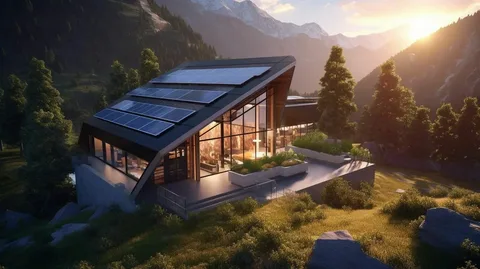In an era where sustainability and energy efficiency are more important than ever, Passive House design is emerging as a powerful solution. Also known as “Passivhaus” (its German origin), this architectural standard emphasizes reducing a building’s ecological footprint while maximizing comfort and energy savings. Whether you’re an eco-conscious homeowner or a green architect, understanding Passive House design is key to building a sustainable future.
What is Passive House Design?
Passive House design refers to a rigorous, voluntary standard for energy efficiency in buildings. It results in ultra-low energy buildings that require little energy for heating or cooling. Unlike traditional construction, Passive House buildings are designed to maintain consistent indoor temperatures year-round with minimal reliance on mechanical systems.
This design concept originated in Germany in the early 1990s and has since gained global traction. It is based on five key principles:
- High-Performance Insulation
Superior insulation is essential in Passive House construction. It minimizes heat transfer, keeping indoor temperatures stable regardless of external conditions. - Airtight Construction
Airtightness prevents drafts and energy loss. Special membranes and sealing techniques ensure that warm or cool air stays inside. - High-Quality Windows and Doors
Triple-glazed windows and insulated frames are used to prevent heat loss. These windows are typically oriented to optimize solar gain in winter. - Thermal Bridge-Free Design
Thermal bridges are areas where heat escapes more easily. Passive House design eliminates these weak spots to maintain energy efficiency. - Heat Recovery Ventilation (HRV)
A mechanical ventilation system with heat recovery ensures fresh air circulation while retaining indoor temperature.
Benefits of Passive House Design
Passive House design isn’t just a trend—it’s a long-term investment with multiple advantages:
- Energy Efficiency
Passive homes use up to 90% less energy for heating and cooling compared to conventional buildings. This leads to significantly lower energy bills. - Superior Comfort
The consistent indoor temperature, quiet atmosphere, and clean air quality make Passive Houses exceptionally comfortable to live in. - Environmental Sustainability
By reducing carbon emissions, Passive House buildings contribute to environmental conservation and climate change mitigation. - Durability and Low Maintenance
With high-quality materials and efficient systems, Passive Houses often require less maintenance and have a longer lifespan. - Increased Property Value
Sustainable and energy-efficient homes are becoming more desirable in the real estate market.
Key Considerations in Passive House Design
Designing a Passive House involves thoughtful planning and collaboration between architects, engineers, and builders. Here are some core elements to keep in mind:
- Site Orientation: Position the building to maximize sunlight exposure, especially in colder climates.
- Material Selection: Use sustainable, high-performance materials that align with Passive House standards.
- Energy Modeling: Software tools help simulate energy performance and guide design decisions.
- Certification Process: Official Passive House certification requires meeting specific energy targets and undergoing rigorous testing.
Passive House Design vs. Traditional Green Building
While Passive House design shares goals with other green building certifications (like LEED or BREEAM), it differs in its strict focus on energy performance. Passive House is less about point-based scoring systems and more about meeting measurable, science-backed criteria for energy use and thermal comfort.
The Global Rise of Passive House Design
Countries around the world are embracing Passive House standards as part of their efforts to reduce greenhouse gas emissions. From Europe to North America, cities are offering incentives for energy-efficient construction and setting policies that align with Passive House principles.
In urban areas, we’re also seeing a rise in Passive House retrofits—where older buildings are upgraded to meet modern energy standards. This approach helps preserve cultural heritage while enhancing sustainability.
Final Thoughts
Passive House design is more than just a building style—it’s a commitment to energy efficiency, sustainability, and better living. With rising energy costs and growing environmental concerns, now is the time to embrace this innovative approach. Whether you’re building a new home or upgrading an existing one, incorporating Passive House principles can create a healthier, more comfortable, and eco-friendly living space.
By choosing Passive House design, you’re not only investing in your home but also in the planet’s future.

